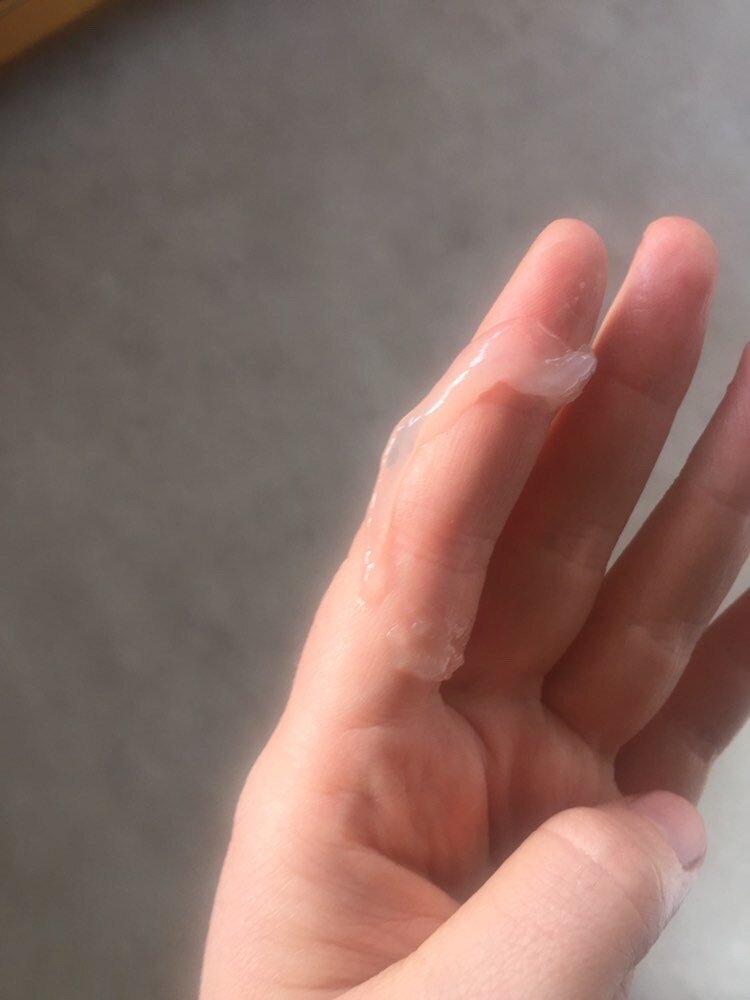At the same time it could also indicate you are already pregnant. However the discharge from the ovulation process will dry up and become sticky.

This type of mucus is seen between ovulation and the beginning of your period.
/fertile-cervical-mucus-but-no-ovulation-on-bbt-chart-1960234-FINAL-a8fbec53b1e84e189e309ffba69f19db.png)
Thick discharge after ovulation. A yeast infection is the most common possible cause of discharge before after and during ovulation. People usually notice fertile discharge a few days before ovulation. The discharge may become wetter and more slippery over several days.
Thick white sticky vaginal discharge is a sign of ovulation. Brown discharge after ovulation A brown discharge 6 days or 7 days past ovulation is an indication of implantation bleeding. After ovulation the discharge becomes milky white and has a thicker consistency.
The discharge is white and typically resembles cottage cheese. Having the thick white discharge on the 8 th day after ovulation can also mean you are pregnant with the possibility of not being pregnant also eminent. Discharge is not smelling and there are also no signs of pain inflammation or vulvar sores.
Progesterone causes discharge to feel sticky. But if sperm successfully fertilize an egg you might notice that your discharge remains thick clear and stretchy. However after ovulation you may notice jelly like discharge if conception has occurred.
This is due to estrogen levels decreasing. Other symptoms may include burning itching soreness or pain during intercourse. This is normal and does not indicate anything serious.
Doctors say that ovulation discharge lasts for a few days. After ovulation your vaginal discharge will become dry and thin. Discharge that is clear sticky or.
According to some experts discharge can signal fertility and ovulation. After the ovulation process is over the mucus will change back to the normal clear to slightly white color. Is jelly like discharge a sign of pregnancy.
These are due to increased quantities of Candida a fungus. Depending on your menstrual cycle the ovulation discharge can appear between four days before and after the mid-point of your cycle. Clear stretchy thick white discharge can tell the ovulation date.
It is often referred to as implantation bleeding. After ovulation as egg is released so called corpus luteum starts secreting progesterone which is associated with thick white discharge. This discharge can vary from thick to watery discharge during your menstrual cycle.
It is not uncommon for discharge to change during the course of a monthly cycle. Vaginal discharge white and thick is seen during early pregnancy and continues for the first two trimesters. What does white Discharge after Ovulation mean.
After the drying up of the mucus and reverting to the normal discharge you may notice an increase in the mucus with the egg white discharge appearing once more. It will depend on the presence or absence of the other first signs of the pregnancy since it is still too early to rely on a pregnancy test. Vaginal discharge is important for the reproductive system.
After ovulation the amount of discharge usually decreases. Thick discharge after ovulation happens because of the natural spike of progesterone hormone in the later stages of the menstrual cycle. This happens because hormones including.
Usually in most women a white creamy stretchy and sticky discharge is a sign that your period is around the corner. Implantation bleeding usually occurs around 6-12 days after ovulation. Implantation bleeding looks like light bleeding pink spots or browns spots of discharge.
Thick white vaginal discharge is often called infertile cervical mucus. Brown discharge right after ovulation can simply be a sign that any remaining and decomposed blood has been picked up by the discharge and is being cleaned out. A thick white discharge can occur throughout your menstrual cycle.
Implantation is the process by which a fertilised egg attaches itself to the walls of the uterus. Usually around the time of ovulation you may notice that your normal vaginal discharge that is usually light and almost colorless appear thicker and whiter than usual. Once ovulation is over vaginal discharge usually changes again.
Brown discharge can be a sign of pregnancy. Your discharge will usually stay thick and jelly like. This is due to estrogen and progesterone rising.
As long as the discharge is not accompanied by symptoms like pain redness or itching it is absolutely normal. During your menstrual cycle your vaginal epithelial cell and bacteria are washed out through cervical mucus produced from the cervix. For non-pregnant women without any vaginal infection discharge after ovulation is thick and whitish in color.
Ovulation is the release of an egg by one of the ovaries. The discharge may start out thinner in the days leading up to. The phase immediately following ovulation is called the luteal phase of your cycle.
This discharge is meant to help sperm reach the viable egg in your uterine tube. It might also take on a whitish color. This discharge is known as leukorrhea and its completely normal.
During ovulation its normal to experience clear stretchy mucus discharge thats similar to egg whites.
Visualizing Changes In Your Cervical Fluid Cervical Mucus
 Yellow Snot Like Cm After Ovulation Before Bfp November 2018 Birth Club Babycenter Canada
Yellow Snot Like Cm After Ovulation Before Bfp November 2018 Birth Club Babycenter Canada
/fertile-cervical-mucus-but-no-ovulation-on-bbt-chart-1960234-FINAL-a8fbec53b1e84e189e309ffba69f19db.png) Can You Have Fertile Cervical Mucus But Not Ovulate
Can You Have Fertile Cervical Mucus But Not Ovulate
 White Discharge After Ovulation Tmi Babycenter
White Discharge After Ovulation Tmi Babycenter
 What Can Cause A Watery Discharge During Ovulation Quora
What Can Cause A Watery Discharge During Ovulation Quora
 Visualizing Changes In Your Cervical Fluid Cervical Mucus
Visualizing Changes In Your Cervical Fluid Cervical Mucus
 Discharge After Ovulation Causes And What It Really Means Conceive Success
Discharge After Ovulation Causes And What It Really Means Conceive Success

